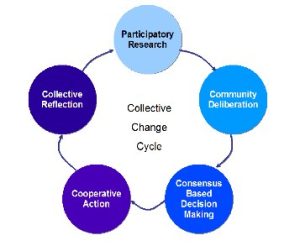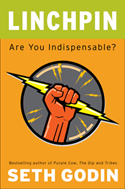Neil Perkin penned this terrific post Agile Planning.

Image Source
This post resonated loudly with me because of the recent work I have been doing as a facilitator with Government agencies. Also, the upcoming Show Me The Change conference in Melbourne this May is also linked.
Here’s a snapshot of Neil’s Agile post:
We are all bombarded by change and it’s accelerating (and will not slow down) … the enterprise of the future will be hungry for change … but our current business/government are stuck in linear systems that are slow, top-down & inflexible …
“Our structures need to be more speedy. Speed used to kill now lack of speed kills. Lets have organizations that can iterate quickly and empower its folks to make decisions. Percolating decisions up and down an organization makes little sense” Rishad Tobaccowala
… being ‘agile’ is not a process or panacea – it’s a philosophy that you either have or you don’t … Agile is:
… welcoming of changing requirements, even late in development, because it is an opportunity to harness change for competitive advantage. Big business creates big projects that take a long time to confirm, implement, and complete. Projects are often stalled by hierarchical management processes.
… focused on frequent deliverables, with a preference for shippable product and shorter cycles, and implemented at a constant pace which is measured and transparent.
… centred around the belief that the best results come from self-organising teams. Teams that reflect regularly on how to become more effective, then adjust behaviours accordingly.
… projects are built around trusted, motivated individuals who are given the environment and support they need.
… documentation is kept to a minimum, with face-to-face communication preferred, and a focus on simplicity – maximising the amount of work not done.
And I really like this paragraph as it sums up my observations of the planning processes that so many of our large institutions are stuck in …
“I don’t claim here that agile development processes are some kind of cure-all. But I do think that business processes in many industries and organisations are woefully out-of-date and hopelessly rigid. Businesses increasingly operate in complex adaptive systems which, as Bud Caddell rightly says, are “characterized by perpetual novelty – talking of equilibrium is pointless, equilibrium in a complex adaptive system is essentially a dead system”. Inflexible, long-term strategic plans are increasingly irrelevant.” Neil Perkin
Show Me The Change
Ok, so what’s this conference got to do with Agility? Everything!!!!
Participants who are coming to Show Me The Change (deep down) know that our current approach to the design, staging and evaluation of behaviour change projects needs a re-think. We need to take stock and challenge our assumptions about behaviour change and the goals that we set. We have tinkered with ‘behaviour change’ tools and tactics for long enough. It’s time to go deeper.
In the context of ‘Behaviour Change projects’, agility is a mindset and NOT a set of processes, strategies and tools. It’s a philosophy that everyone involved adopts.
In practice, I think it involves these types of tangible features (some adapted from Dave Snowden’s post here):
- Do lots of little things rather than 1 big thing – Don’t put all your resources into 1 strategy … now matter how much ‘planning’ and research you have done
- Don’t be afraid to experiment and some things will fail – We often learn more from failure than success anyway
- Design projects that can be ‘monitored’ – By monitor I mean we can quickly notice if things are working or not. It’s no good if you need to wait 12 months for the data you need!
- Beware of ‘Best Practice’ and the success of others – Why? Because your context is different. Just becasue a series of home assessments lead to a reduction in household energy use in Town A, it doesn’t mean the same will apply in Town B
- Challenge the ‘Goals’ and ‘Evaluation Measures’ imposed on you by funders – Often we get asked to report a whole heap of indicators that are useless. At times, even the underlying goal of a project is unattainable … it’s aspirational at best. Don’t get sucked in to being ‘measured’ against such goals/aims. Have these conversations early.
- Challenge the direction and priorities of your project as it emerges – If you pay attention and monitor your project, new insights will emerge. Many will be unexpected and point to new priorities. Don’t be afraid to challenge your project plan and re work it along the way. Again, have these conersations early on.
- Collect and share Stories – Stories of failure and success are critical. Stories are memorable and they stick. Analysis of stories can uncover patterns that data analysis misses.
- Don’t be fearful of failure – Did I say that already?
Geoff Brown




 Good question. I first heard about liminal space from
Good question. I first heard about liminal space from 